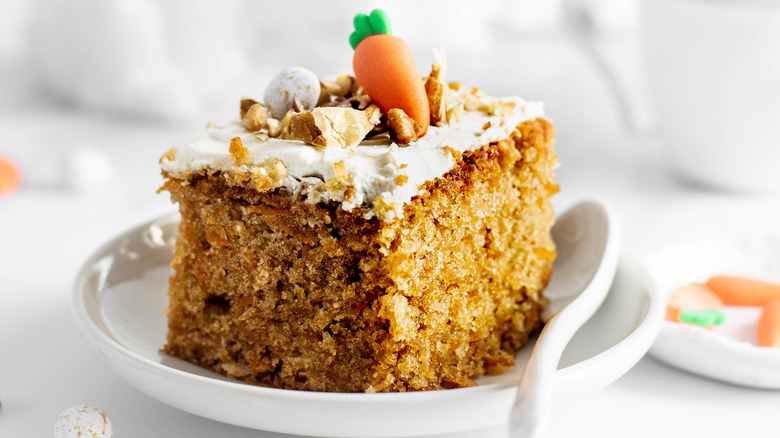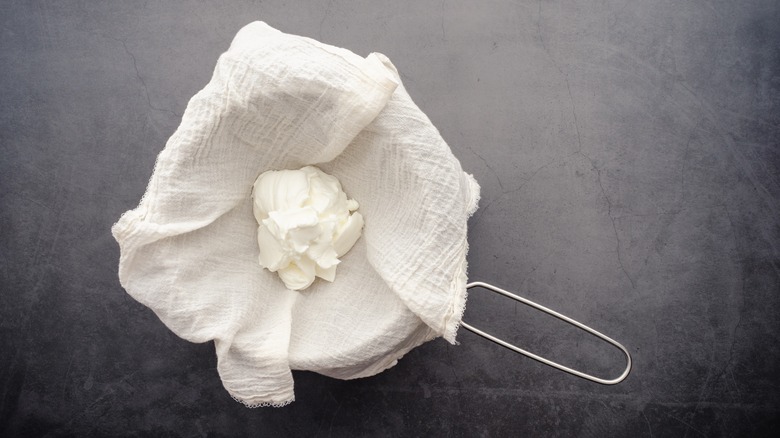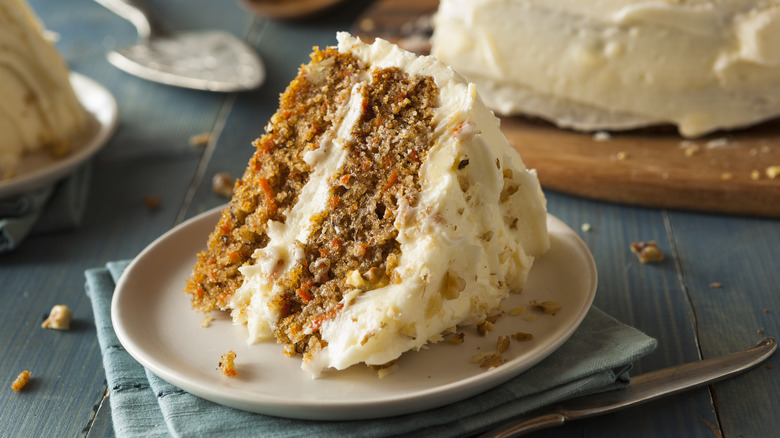Take Your Carrot Cake To New Heights With Tangy Labneh Frosting
If carrot cake sounds boring to you, it's likely because you haven't tried making a version of it that features Middle Eastern ingredients: fragrant ground cardamom seed, pistachios, edible rose petals, or — as the main ingredient of an indulgent, slightly tangy frosting — a spreadable soft cheese called labneh. Labneh is made from a thick yogurt, so it's very similar in taste and texture to sour cream.
According to Science Direct, carrots were first cultivated in modern-day Afghanistan, over a thousand years ago, so it should come as no surprise that the earthy-sweet root vegetable began appearing in neighboring Baghdadi desserts almost immediately after. Famed Indian cookbook author Madhur Jaffrey hybridized carrot cake with the classic regional dessert carrot halwa; her recipe included clarified butter known as ghee along with cardamom, pistachios, blanched almonds, and raisins. Making a carrot cake frosting from labneh (which originated in the Levant) instead of buttercream or cream cheese is a no-brainer — albeit an inspired one.
Make your own labneh
Labneh, while you can probably only find at specialty shops, is easily made by straining yogurt (occasionally mixed with sour cream — which you can also make at home!) and a little salt wrapped in cheesecloth overnight in the refrigerator. One traditional way of preserving labneh is to roll it into balls coated with herbs like dried mint and za'atar and stored in jars submerged in olive oil. Obviously, the labneh destined to become a tangy-sweet frosting won't need this treatment; it'll meet other friends along the way to topping a Middle Eastern-inflected carrot cake.
Once you've made your labneh, whipping up a frosting is as easy as adding icing sugar and flavoring agents like honey, ground cardamom, or vanilla extract. In terms of texture and tang, labneh is virtually identical to sour cream. With respect to sweetness (and depending on how it's made), a labneh frosting is going to be less sugary than a typical buttercream.
Adventures in carrot cake
You can, of course, spread labneh frosting on your favorite carrot cake recipe, whatever that might be. Or, you can take the opportunity to explore new culinary vistas by adding (or substituting) slight flavor variations like a touch of ghee or a handful of golden sultanas; the traditional carrot cake ingredients of ground cinnamon and ginger will feel right at home here, as well. You can take this as far as you want to go — or start with baby steps, like coating the frosting in chopped roasted pistachios in lieu of walnuts.
If you do this, your carrot cake will be transformed from the stodgy, over-sweet tea cake of yesteryear to something altogether more ... intoxicating. As an added bonus, your homemade labneh (in addition to being subject to a good roll in herbs and an olive oil bath) will work beautifully as a dip for pita or a spread on your morning bagel. Labneh can appear alongside savory Middle Eastern foods like hummus just as easily as it can be recruited to top a toothsome cake. It might be a strain to make, but it hardly requires effort.


